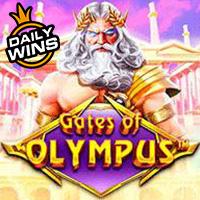


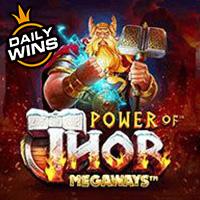

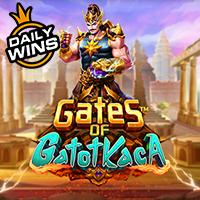
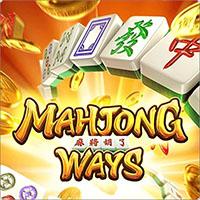
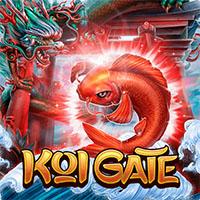
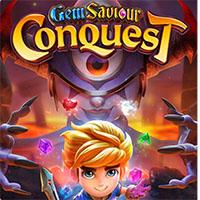

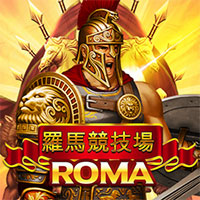
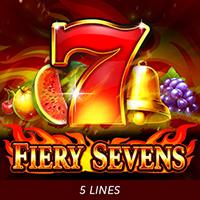
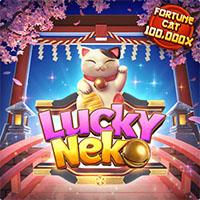

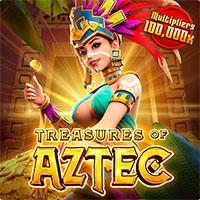


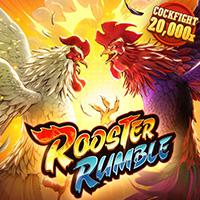
Building upon the foundational understanding of why symbols of power have persisted from ancient myths to modern games, it becomes evident that today’s media continues this legacy through a complex interplay of visual storytelling and cultural symbolism. The enduring nature of these symbols is no coincidence; instead, it reflects a deep-rooted psychological and cultural affinity for representations of authority that transcend time. As we explore how media shapes and transforms these symbols, we uncover the subtle yet powerful ways in which ancient archetypes are reborn and reimagined for contemporary audiences.
Contents
- The Language of Power: Visual and Narrative Symbols in Modern Media
- Media as a Cultural Archive: Reinterpreting Ancient Symbols for Modern Audiences
- The Psychological Resonance of Ancient Power Symbols in Media
- Subversion and Reclamation: Modern Media’s Use of Power Symbols
- The Commercial Power of Symbols: Branding and Media Marketing
- Ethical Implications: When Media’s Reinforcement of Power Symbols Becomes Problematic
- The Future of Power Symbols in Media: Trends and Predictions
- Connecting Back: Why Media’s Reinforcement of Symbols Continues the Legacy
The Language of Power: Visual and Narrative Symbols in Modern Media
Modern media heavily relies on visual cues to evoke authority, often drawing directly from symbols rooted in ancient traditions. For instance, crowns, scepters, and armor are recurrent motifs in films, television, and video games. These elements are not chosen arbitrarily; they are imbued with historical significance that immediately communicates dominance and legitimacy. The origins of such symbols trace back to regal regalia of ancient monarchies and divine authority in religious iconography, serving as visual shorthand for power.
Contemporary visual storytelling amplifies these symbols through high-quality cinematography, costume design, and CGI effects. Consider the depiction of a king in a fantasy film: the crown’s intricate design, the regal robes, and the majestic throne all reinforce the character’s authority. Similarly, video games like Assassin’s Creed or God of War utilize armor and weapons that evoke historical or mythological power, creating an immediate connection with the audience’s collective cultural memory.
In narrative terms, archetypes such as the hero, the ruler, or the warrior are consistently associated with symbols of power. These archetypes serve to reinforce societal notions of authority and mastery, often using storytelling devices that mirror ancient myths—trials, ascension, and the transfer of power—thus creating a strong psychological resonance.
Media as a Cultural Archive: Reinterpreting Ancient Symbols for Modern Audiences
Films, video games, and digital content act as modern repositories of cultural memory, reimagining ancient symbols within new contexts. For example, the depiction of the Throne of Solitude in Marvel’s Black Panther draws on African royal symbolism, blending historical motifs with contemporary narratives of sovereignty and identity. Similarly, mythological symbols like the Trident of Poseidon or the Mjölnir hammer are adapted into modern fantasy settings, emphasizing their symbolic power in a way that resonates with current cultural values.
Digital manipulation and CGI have revolutionized this process, enabling creators to craft hyper-realistic representations of ancient artifacts and mythological figures. This technological advancement amplifies the perceived power of these symbols, making them more vivid and emotionally impactful. For instance, the CGI-rendered Sword of Gryffindor in the Harry Potter franchise visually embodies the concept of a weapon imbued with history and mystical authority, bridging the ancient and modern worlds seamlessly.
The Psychological Resonance of Ancient Power Symbols in Media
Certain symbols evoke subconscious feelings of authority, awe, and reverence because they activate deep-rooted archetypes stored within collective memory. According to Carl Jung’s theory of archetypes, symbols like crowns or scepters symbolize sovereignty and divine right, tapping into universal human experiences of hierarchy and mastery.
Media exploits this psychological mechanism by deliberately incorporating these symbols to elicit specific emotional responses. For example, the image of a victorious general wearing a laurel wreath immediately triggers associations with honor and achievement, rooted in ancient Roman traditions. This subconscious activation enhances the viewer’s immersion and identification with characters embodying these symbols.
Case studies such as the portrayal of King Leonidas in 300 or the depiction of Thor wielding Mjölnir in Marvel movies demonstrate how powerful visual cues can evoke feelings of awe and authority, reinforcing the narrative’s themes of heroism and divine right.
Subversion and Reclamation: Modern Media’s Use of Power Symbols
While media often reinforces traditional symbols of authority, it also subverts and reclaims them to challenge existing power structures. For instance, in contemporary films and art, symbols like the crown or scepter are sometimes depicted in a satirical or dystopian manner, questioning their legitimacy or highlighting corruption. The series Game of Thrones critically examines monarchy and divine right, often portraying the crown as a symbol of treachery and chaos rather than divine authority.
Countercultural movements have reclaimed symbols of power, transforming them into emblems of resistance. The black power fist, an ancient symbol of strength, was reinterpreted during the Civil Rights Movement as a sign of defiance. Similarly, contemporary digital art and memes often parody traditional symbols, creating a dynamic tension between reverence and critique.
This ongoing dialogue between reinforcement and subversion influences how societies perceive authority and power, illustrating that symbols are not static but adaptable tools for cultural expression.
The Commercial Power of Symbols: Branding and Media Marketing
Ancient symbols have found a new life in branding, where they evoke trust, authority, and prestige. Luxury brands like Rolex or Louis Vuitton incorporate symbols such as crowns and coats of arms to position themselves as symbols of elite status. These symbols are subtly embedded into logos and advertising to reinforce societal hierarchies and ideals of success.
Media campaigns leverage these symbols through storytelling that associates products with notions of power and mastery. For example, automotive advertising often depicts vehicles with regal or heroic imagery—capturing the audience’s subconscious desire for status and control. The use of old heraldic symbols or mythological references in marketing creates an aura of timeless authority.
Furthermore, digital media employs these symbols in subtle ways, such as iconography or visual cues that reinforce societal hierarchies. This strategic embedding demonstrates how powerful symbols continue to shape perceptions, influencing consumer behavior and societal values.
Ethical Implications: When Media’s Reinforcement of Power Symbols Becomes Problematic
The use of ancient symbols in media raises important ethical questions. When symbols of authority are employed without context, they risk perpetuating stereotypes or legitimizing harmful social hierarchies. For instance, the depiction of racial or gender-based symbols intertwined with authority can reinforce biases if not critically examined.
Creators bear a responsibility to handle these symbols with cultural sensitivity and awareness of their historical baggage. Misappropriation or superficial use can lead to cultural appropriation, marginalization, or the reinforcement of negative stereotypes. A notable example is the use of Native American headdresses in fashion or media, which often trivializes cultural significance.
Strategies to mitigate these issues include consulting cultural experts, providing context within narratives, and promoting diverse perspectives in content creation. Mindful use of power symbols can foster a more inclusive and respectful media landscape.
The Future of Power Symbols in Media: Trends and Predictions
Emerging technologies like augmented reality (AR) and virtual reality (VR) are poised to revolutionize the way power symbols are represented and experienced. These immersive platforms can intensify symbolic imagery, allowing audiences to virtually step into mythic worlds where symbols of authority are experienced firsthand. Imagine donning a VR crown or wielding a mythological weapon, creating a visceral connection that transcends traditional media.
As cultural narratives evolve, so too will the symbols used to express power. Future media might blend ancient archetypes with contemporary values such as sustainability, equality, and digital sovereignty. For instance, symbols of divine authority could be reinterpreted to emphasize environmental stewardship or decentralized power structures.
Balancing tradition with innovation will be critical. Media creators will need to be mindful of the enduring psychological impact of these symbols while embracing new technologies that allow for more nuanced and dynamic representations.
Connecting Back: Why Media’s Reinforcement of Symbols Continues the Legacy
Reflecting on the overarching theme, it becomes clear that modern media perpetuates an intrinsic human connection to ancient symbols of power. This connection is not superficial but deeply rooted in our collective subconscious, where symbols serve as bridges between past, present, and future.
The cyclical nature of symbolism in human culture ensures that these icons are continually reborn within new contexts, adapting to societal shifts while retaining their core meanings. Media acts as both a mirror and a magnifier, preserving this legacy by reinterpreting symbols in ways that resonate with contemporary values and technological advancements.
“Symbols of power are not static relics; they are dynamic icons that evolve with human culture, serving as timeless tools for expressing authority and identity.”
Understanding the role of media in reinforcing and transforming these symbols enhances our appreciation of how deeply intertwined our cultural narratives are with visual and mythological archetypes. Recognizing this continuum allows us to critically engage with media content, appreciating both its power to inspire and its responsibility to promote positive and inclusive representations of authority.
